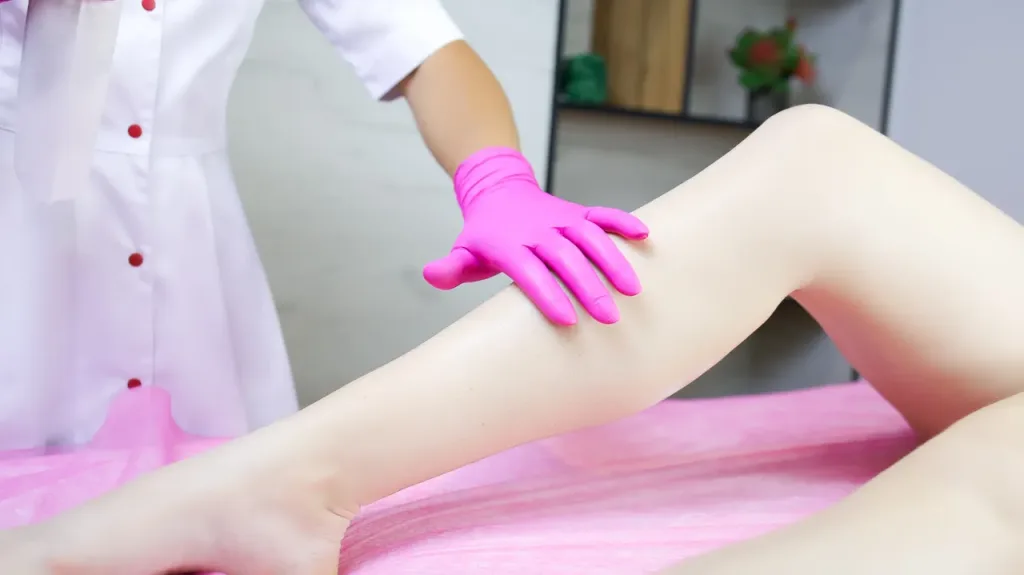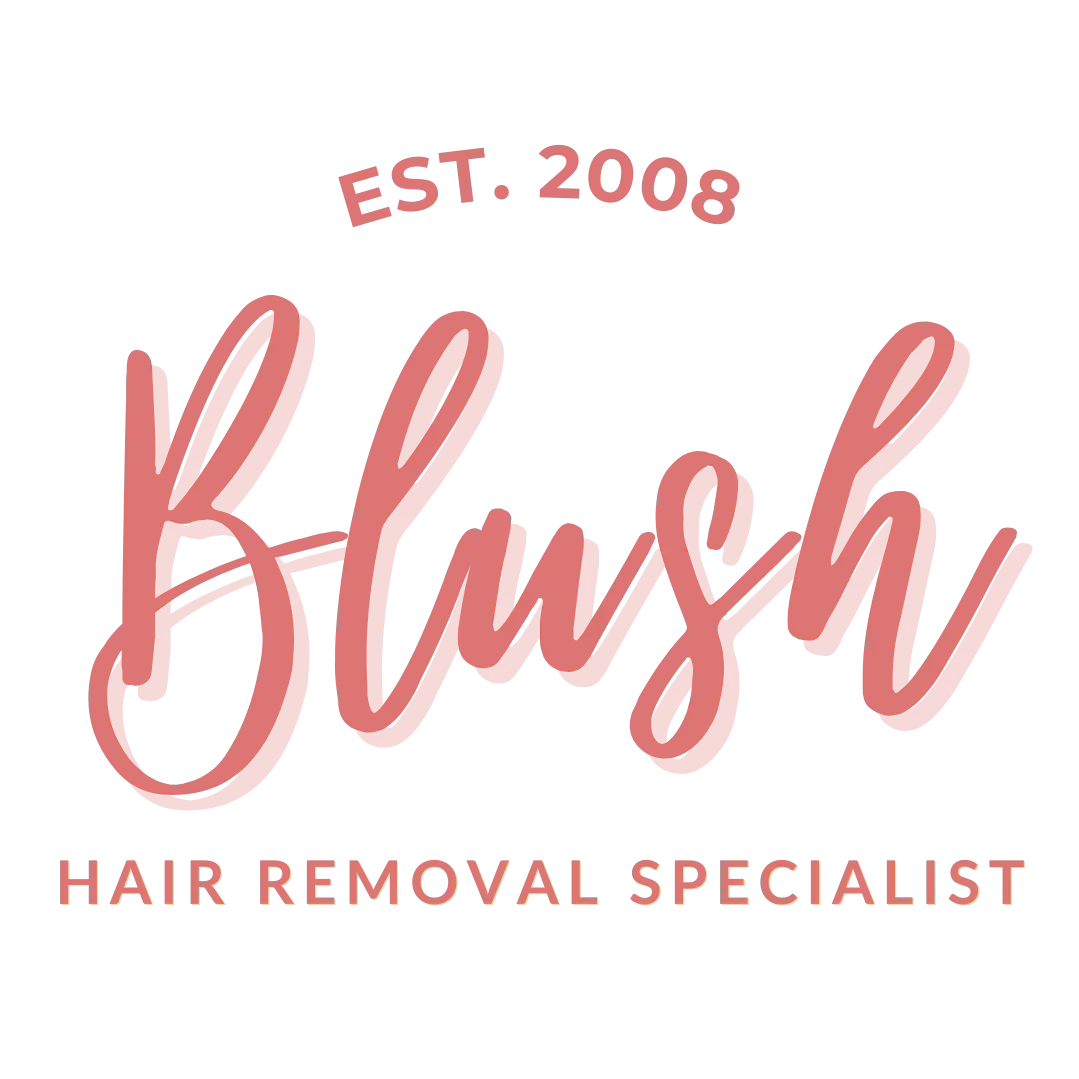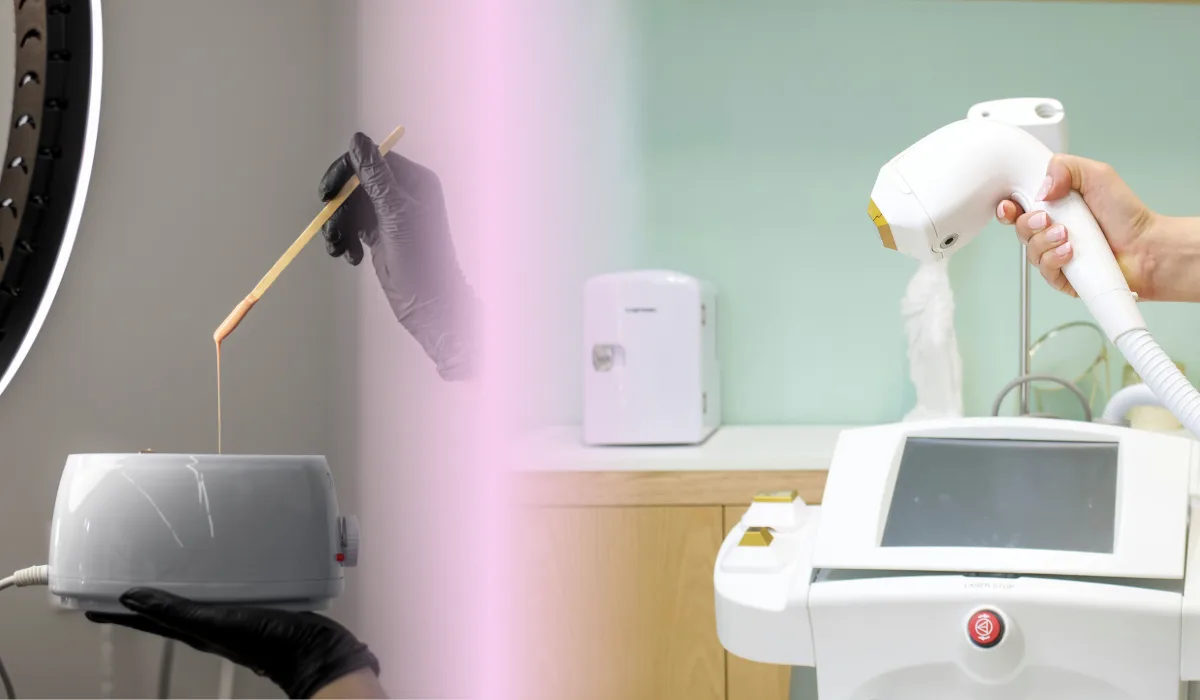Table of Contents
Tired of the endless waxing cycle? Laser hair removal eliminates the need for shaving, waxing, and plucking from your regular maintenance routine. With just three to four sessions, this treatment can remove around 80% of unwanted hair for some people making it an increasingly popular alternative to traditional hair removal methods.
For those in Singapore wondering about the transition from waxing to laser treatments, this guide walks you through each step, from preparation to what to expect, for a smooth transition to lasting results.
Why Switch from Waxing to Laser Hair Removal?
Many individuals discover that traditional waxing has significant drawbacks despite its popularity. Waxing only removes hair temporarily, with regrowth typically beginning within 3-6 weeks. This constant cycle means scheduling regular appointments every few weeks throughout your lifetime, creating an ongoing maintenance burden.
Waxing can be exceptionally painful, particularly in sensitive areas like the underarms and bikini line. Beyond the immediate discomfort, waxing frequently causes:
- Skin irritation, redness, and potential burns from hot wax
- Ingrown hairs when hair curls back into the skin rather than growing outward
- Risk of folliculitis, a bacterial skin infection resulting from hair follicle damage
- Required hair growth of 6-12mm between sessions for the wax to grip effectively
Furthermore, while waxing remains a popular and effective method for temporary hair removal, it may not be suitable for everyone. Those with recent sun exposure or who are on certain medications may experience increased skin sensitivity. In such cases, clients are encouraged to consult with our specialists to determine the most appropriate and comfortable treatment option whether waxing or laser.
Laser hair removal as a solution for long-term hair removal
Unlike waxing, which only removes hair at the surface, laser hair removal targets the hair follicles beneath the skin’s surface using highly concentrated light energy. This approach damages the follicles, effectively inhibiting future hair growth. Most people experience up to 90% permanent hair reduction after just 3-7 sessions.
Additionally, laser treatments are generally less painful than waxing, often described as feeling like the snapping of a rubber band against the skin.
Common reasons in Singapore make the switch
In Singapore’s humid climate, dealing with unwanted hair can feel particularly challenging. The consistent effectiveness of laser hair removal provides a practical solution for many Singaporeans seeking smooth skin without constant maintenance.
Although laser hair removal requires a higher initial investment, it proves more cost-effective over time compared to waxing sessions. Moreover, unlike waxing which requires growing out hair between appointments, laser treatment allows you to remain hair-free throughout the entire process, since shaving is recommended between sessions.
How Laser Hair Removal Works (and Why It’s More Effective)
Laser technology works by emitting concentrated beams of light that target melanin (the pigment in hair) while sparing surrounding skin tissue. The pigment absorbs this light energy, which subsequently converts to heat, effectively damaging the hair follicle. This precise targeting is what makes laser treatments notably more effective than surface-level removal methods. The follicle damage prevents future hair growth while leaving the surrounding skin unharmed.
Modern laser devices use specific wavelengths designed for different hair colours and skin tones. Alexandrite lasers (755nm) are most effective on fair to olive skin tones due to their strong melanin absorption, while Nd:YAG lasers (1064nm) are safer for darker skin as they penetrate deeper with minimal melanin absorption. In between these two is advanced diode laser technology, which operates at an optimal wavelength of 800–810nm, striking the ideal balance to safely and effectively target hair follicles across a broad range of skin types. This makes diode lasers a versatile and reliable option for long-term hair reduction with minimal risk and greater comfort.
Progressive results over multiple sessions
Hair grows in cycles: active growth, regression, and resting phases. Because laser treatment only affects follicles in the active growth phase, multiple sessions are necessary to catch all hairs as they enter this phase. Most individuals require 6-8 sessions spaced 4-6 weeks apart for optimal results.
After each session, patients typically notice:
- Initial 10-25% reduction after first treatment
- Increasing reduction with subsequent sessions
- Remaining hair becoming progressively finer and lighter
- Full results after completing the recommended treatment course
Is Laser Hair Removal Right for You?

Determining if laser hair removal suits your needs requires understanding several key factors before booking your first appointment.
Skin tone and hair type considerations
Successful laser treatment relies on the contrast between hair and skin colour. The technology works by targeting melanin(pigment) in hair follicles. Consequently, individuals with light skin and dark, coarse hair typically experience optimal results. Nevertheless, advancements in laser technology have made treatments accessible for a wider range of skin tones.
The Fitzpatrick scale, which categorises skin into six types, helps determine suitable treatment approaches. While lighter skin tones (Types I–III) typically respond well to traditional laser systems, darker skin types (Types IV–VI) require more carefully calibrated technology to avoid irritation or pigmentation issues.
At Blush, we use an advanced diode laser system that is safe and effective across all skin types. Unlike older technologies that may carry risks for deeper skin tones, our diode laser delivers energy at a wavelength that penetrates deep enough to target hair follicles without excessive absorption by skin melanin. This makes it ideal for treating both fair and dark skin tones, offering consistently smooth results with minimal discomfort or side effects.
Bear in mind that blonde, red, grey or white hair contains less melanin, making it more challenging to treat effectively with standard laser technology.
Areas best suited for treatment (including bikini laser hair removal)
Laser hair removal works exceptionally well on regions with thicker, coarser hair growth patterns, including:
- Bikini area (particularly effective due to coarse hair texture)
- Underarms (smaller area with quick treatment time)
- Legs (large area with visible results)
- Face (upper lip, chin, sideburns)
- Back and shoulders (popular among men)
The bikini area responds particularly well to laser treatment, with reduction rates between 80-95% depending on hair density.
Who should avoid laser (e.g. pregnancy, certain medications)
Despite its effectiveness, laser hair removal isn’t suitable for everyone. You should avoid treatment if you:
- Are pregnant or breastfeeding
- Take photosensitising medications including certain antibiotics, Accutane (wait 6 months after discontinuing), or some antidepressants
- Have active skin conditions like psoriasis or open wounds
- Recently tanned or have sunburn
- Have tattoos in the treatment area
Unsure if laser hair removal aligns with your unique circumstances? Contact Blush to get a personalised laser hair removal plan tailored to your specific skin type, hair colour, and treatment goals.
Preparing for Your First Laser Session
Proper preparation ensures optimal results from your laser hair removal treatments. Once you’ve decided to make the switch from waxing, following these pre-treatment guidelines will maximise effectiveness and minimise potential side effects.
Stop waxing 2 to 4 weeks in advance
Laser hair removal works by targeting the follicle, so it needs to be intact. Avoid waxing, threading, or plucking for at least 2 to 4 weeks before your session. You can continue shaving, since it only trims the hair above the skin.
Shave 24 hours before your appointment
Shaving the day before helps the laser focus on the follicle without surface hair getting in the way. Do not pluck or tweeze, even stray hairs, as this can reduce the effectiveness of the treatment. This is especially important for small areas like the face or underarms.
Avoid sun, exfoliation, and strong skincare products
Your skin should be in its natural state. Stay out of the sun for at least two weeks before treatment. Stop using exfoliating products a week prior, and pause active ingredients like retinoids, AHAs, or BHAs for 3 to 5 days. On the day of treatment, skip makeup, lotions, and deodorants. Tanned skin can make laser treatment less safe and less effective.
Share any medications or skin conditions
Let your provider know about any medications you are taking, especially antibiotics or acne treatments, as they may increase your skin’s sensitivity. Also mention any skin conditions like eczema, psoriasis, or recent cold sores. This helps your provider adjust your treatment safely.
What to Expect During and After Treatment

The treatment journey begins once you’re settled in the treatment room. Understanding what to expect both during and after your laser sessions helps ensure optimal results and minimises unwanted surprises.
What happens in a session: duration, sensation, safety measures
Typically, a laser hair removal session lasts approximately 30 minutes, though this varies based on the treatment area. The experience involves the practitioner applying a cooling gel before carefully manoeuvring the hand-held device across your skin.
Special care for sensitive areas like bikini or face
Sensitive regions like the bikini line or face require additional consideration given their thinner skin and higher concentration of nerve endings. Fortunately, these areas are safely treatable and are among the most targeted areas. The practitioner may adjust the settings or apply additional cooling to ensure comfort in these delicate zones.
Post-care: what to avoid in the first 24–48 hours
Initially after treatment, your skin needs gentle care. Avoid:
- Hot showers, saunas, and intense exercise
- Sun exposure (use SPF 50+ if outdoors)
- Makeup, deodorants, or fragranced products on treated areas
- Tight clothing that may cause friction
Managing common side effects (e.g. redness, tingling, sensitivity)
Afterward, you may notice redness and swelling, which typically resolves within a few hours to two days. The treated hair doesn’t fall out immediately but takes up to two weeks to shed completely. Cold compresses can help soothe any discomfort. In fact, most side effects are minor and temporary, with serious complications being extremely rare when treatments are performed by qualified professionals like us.
Your Laser Hair Removal Plan with Blush
Switching from waxing to laser hair removal is a personal process. At Blush, it begins with a thorough consultation where our specialists assess your skin tone, hair type, and treatment goals to create a plan tailored to you.
Most clients see the best results with 6 to 8 sessions, spaced 4 to 6 weeks apart. This schedule allows us to target hair during its active growth phase, which is when laser treatment is most effective. The exact timing may vary depending on the area being treated.
If you’re new to laser hair removal, a patch test is a good first step. It allows us to see how your skin reacts and helps ensure your comfort before starting a full course of treatment.
Most clients describe the sensation as a brief warm snap, which is generally much more comfortable than waxing. Results usually become noticeable after three to four sessions. Throughout the process, we monitor your progress and fine-tune the settings to maintain both comfort and effectiveness.
Between appointments, follow the post-treatment guidelines provided. These typically include avoiding sun exposure, using gentle skincare products, and shaving instead of waxing.
Once your initial treatment plan is complete, you may need occasional maintenance sessions. Hormonal changes can sometimes trigger new hair growth, and these touch-ups help maintain smooth, lasting results.
With consistent care and regular sessions, most clients achieve 80 to 95 percent permanent hair reduction, offering a long-term solution that replaces the cycle of waxing.
FAQs
How long should I wait after waxing before starting laser hair removal?
It’s best to stop waxing 4-6 weeks before your first laser hair removal session. This allows the hair follicles to regrow, which is necessary for the laser treatment to be effective.
Is laser hair removal more effective than waxing?
Yes, laser hair removal is generally more effective than waxing for long-term hair reduction. While waxing provides temporary results, laser treatments can achieve up to 90% permanent hair reduction after 3-7 sessions.
How painful is laser hair removal compared to waxing?
Laser hair removal is typically less painful than waxing. Many describe the sensation as feeling like a rubber band snapping against the skin. Modern devices also include cooling mechanisms to minimise discomfort during treatment.
Can I shave between laser hair removal sessions?
Yes, shaving is the only recommended hair removal method between laser sessions. However, it’s best to wait 24-48 hours after treatment before shaving to allow your skin to calm down.
How many laser hair removal sessions will I need to see results?
Most people require 6-8 sessions spaced 4-6 weeks apart for optimal results. You may start noticing a reduction in hair growth after 3-4 sessions, with full results appearing after completing the recommended treatment course.

